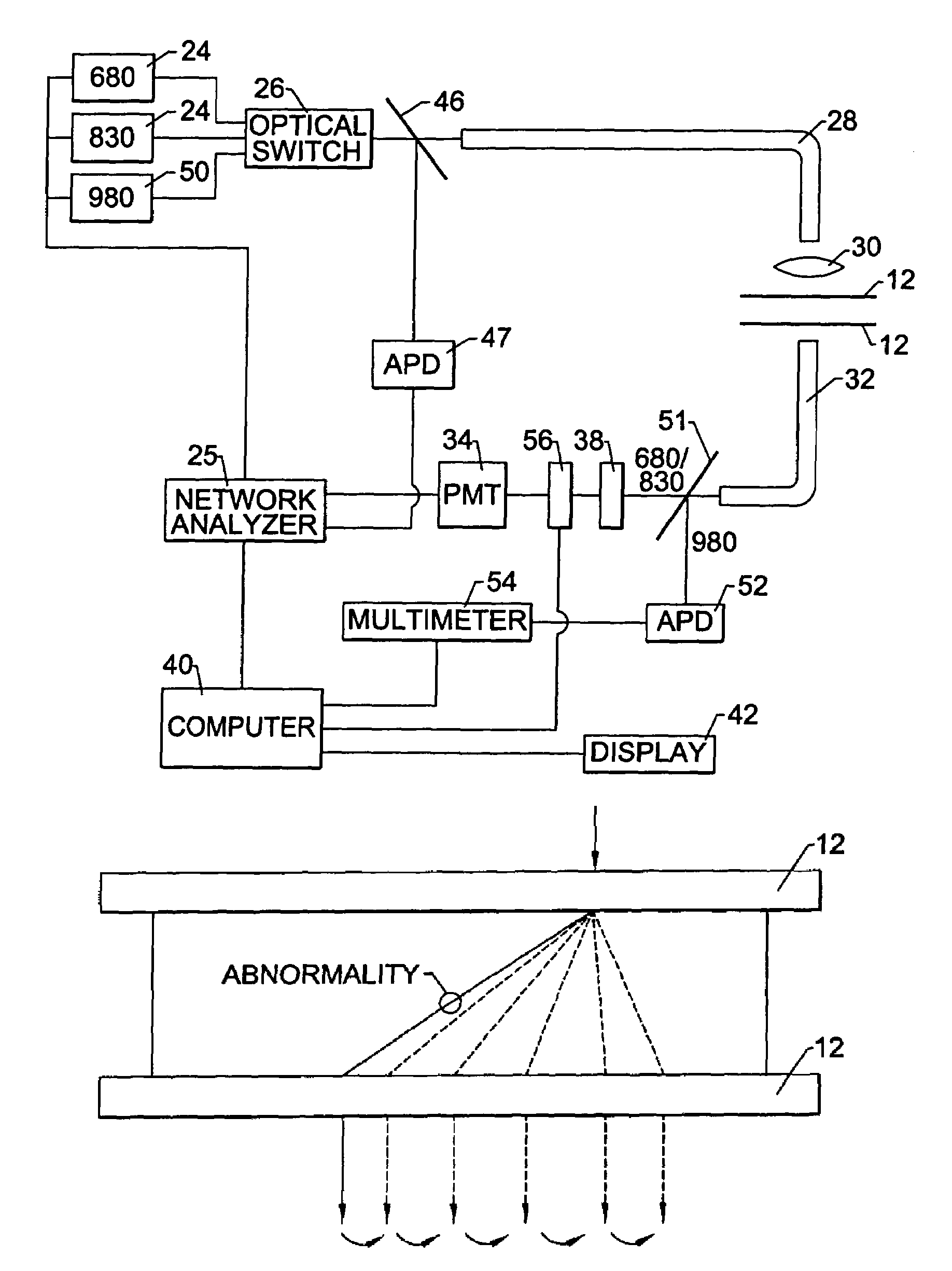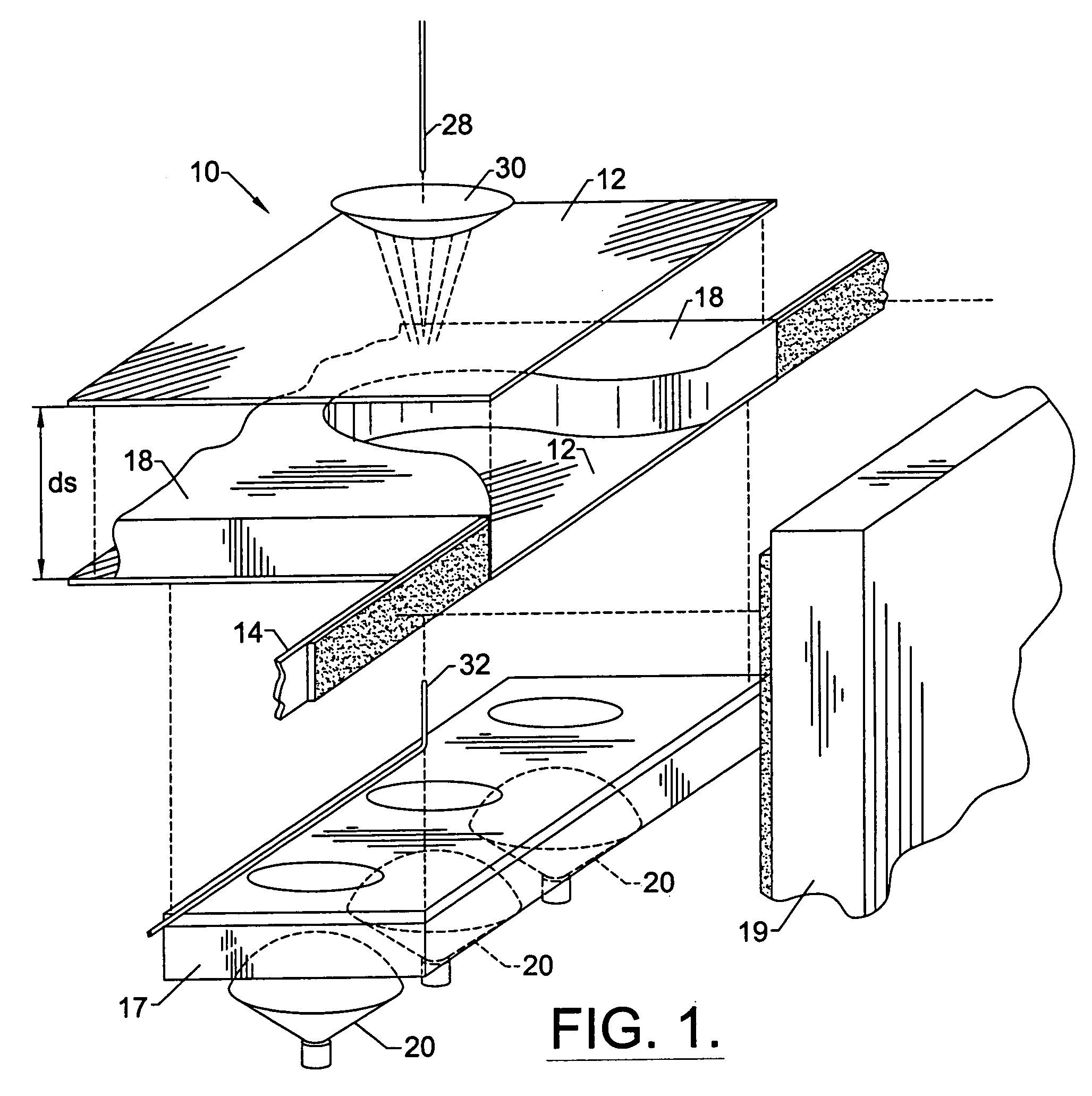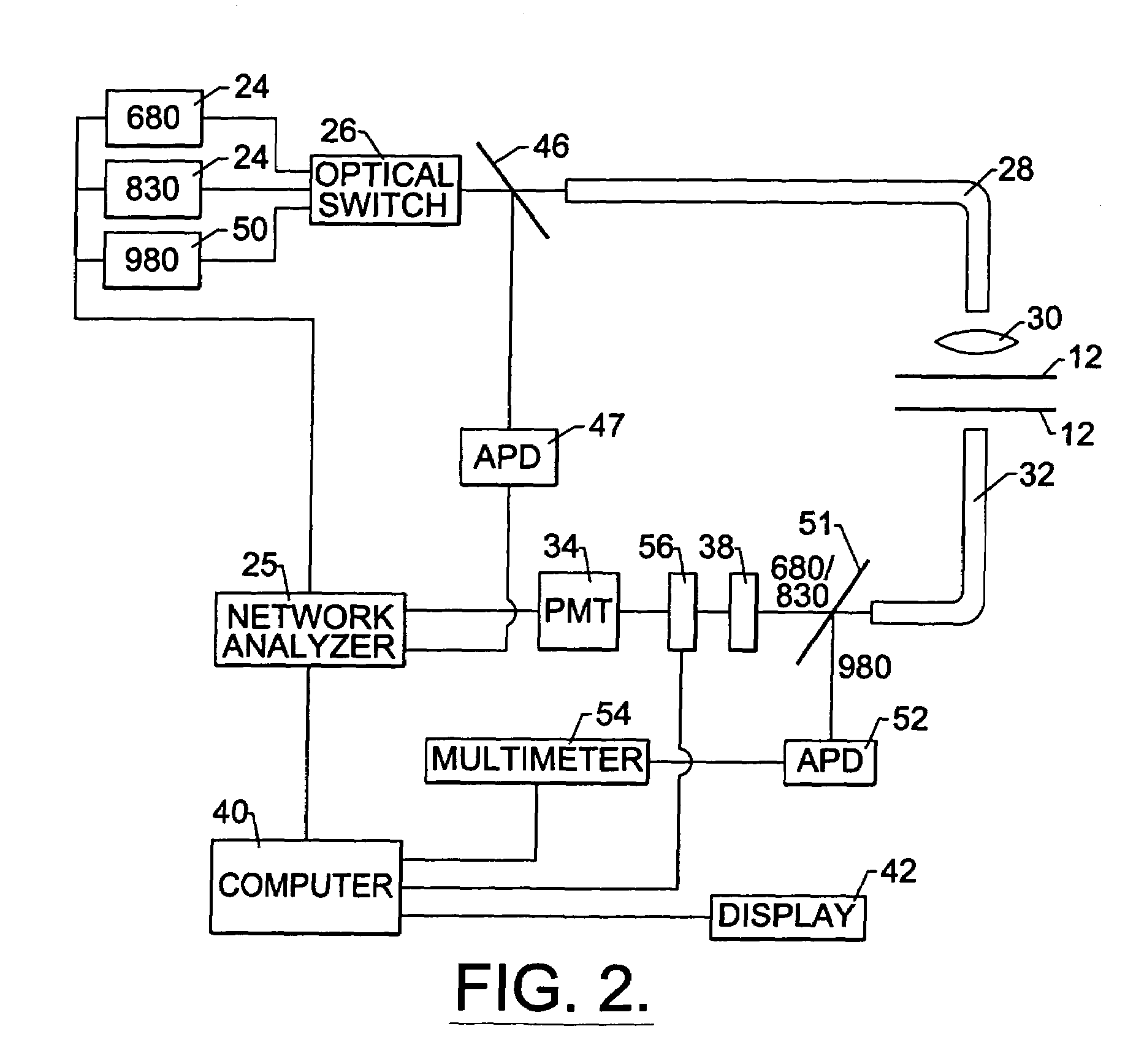Method and apparatus for detecting an abnormality within a host medium utilizing frequency-swept modulation diffusion tomography
a technology of diffusion tomography and frequency-swept modulation, which is applied in the field of detection methods and apparatus, can solve the problems of insufficient quality of images obtained by x-ray mammography techniques to detect masses in the patient's breast, high cost of magnetic resonance imaging machines, and inability to meet the needs of patients, so as to facilitate breast imaging, eliminate deleterious edge effects, and improve image quality
- Summary
- Abstract
- Description
- Claims
- Application Information
AI Technical Summary
Benefits of technology
Problems solved by technology
Method used
Image
Examples
Embodiment Construction
[0029]The present invention now will be described more fully hereinafter with reference to the accompanying drawings, in which preferred embodiments of the invention are shown. This invention may, however, be embodied in many different forms and should not be construed as limited to the embodiments set forth herein; rather, these embodiments are provided so that this disclosure will be thorough and complete, and will fully convey the scope of the invention to those skilled in the art. Like numbers refer to like elements throughout.
[0030]A method and apparatus for detecting an abnormality in a host medium will now be described in conjunction with the present invention. The method and apparatus of the present invention will be primarily described in conjunction with the detection of a tumor and, more particularly, the detection of a tumor or other mass in a patient's breast. However, the method and apparatus of the present invention can also be employed to detect abnormalities in a nu...
PUM
| Property | Measurement | Unit |
|---|---|---|
| wavelength | aaaaa | aaaaa |
| wavelength | aaaaa | aaaaa |
| power | aaaaa | aaaaa |
Abstract
Description
Claims
Application Information
 Login to View More
Login to View More - R&D
- Intellectual Property
- Life Sciences
- Materials
- Tech Scout
- Unparalleled Data Quality
- Higher Quality Content
- 60% Fewer Hallucinations
Browse by: Latest US Patents, China's latest patents, Technical Efficacy Thesaurus, Application Domain, Technology Topic, Popular Technical Reports.
© 2025 PatSnap. All rights reserved.Legal|Privacy policy|Modern Slavery Act Transparency Statement|Sitemap|About US| Contact US: help@patsnap.com



